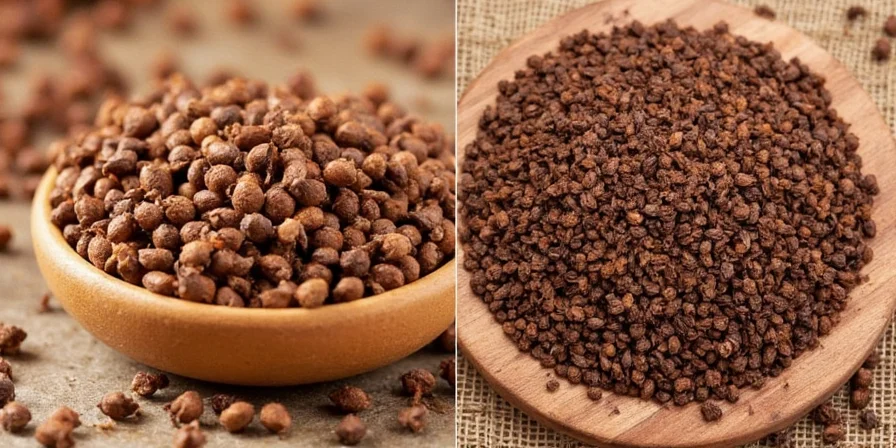Ground thyme and dried whole thyme aren't interchangeable 1:1—use 1 part ground thyme for every 3 parts dried whole thyme. This exact conversion ratio prevents ruined dishes. Ground thyme delivers immediate flavor (best for quick-cooking dishes), while dried whole thyme releases flavor slowly (ideal for long simmers). Here's precisely when and how to use each type for perfect results every time.
Table of Contents
- Ground Thyme to Dried Thyme Conversion Chart
- Key Differences Explained Simply
- When to Use Ground Thyme (5 Best Cases)
- When to Use Dried Whole Thyme (4 Best Cases)
- Storage Tips That Actually Extend Freshness
- 3 Costly Mistakes People Make
- Simple Recipe Examples That Work
- Frequently Asked Questions
Ground Thyme to Dried Thyme Conversion Chart
| Ground Thyme | Dried Whole Thyme | Best For |
|---|---|---|
| ⅛ teaspoon | ¼ teaspoon | Vinaigrettes, quick sauces |
| ¼ teaspoon | ¾ teaspoon | Dry rubs, finishing salts |
| ½ teaspoon | 1½ teaspoons | Baked goods, soups under 20 min |
| 1 teaspoon | 1 tablespoon | Marinades, compound butters |
This exact conversion ratio solves the #1 problem home cooks face: overpowering dishes with ground thyme. Ground thyme's concentrated flavor means you need significantly less than dried whole thyme. Many recipes fail because they treat these forms as interchangeable, but their flavor release differs dramatically.
Key Differences Explained Simply
Understanding why these forms behave differently prevents cooking mistakes:
- Ground thyme: Pulverized leaves release 100% of oils immediately—perfect for quick dishes but overpowers if used like dried thyme.
- Dried whole thyme: Intact leaves release flavor gradually during cooking—ideal for long simmers where flavor builds over time.
The critical difference isn't strength—it's timing. Ground thyme hits hard and fast (like espresso), while dried whole thyme develops slowly (like drip coffee). Using the wrong form at the wrong time creates unbalanced flavors.
When to Use Ground Thyme (5 Best Cases)
Choose ground thyme when you need instant, uniform flavor distribution:
- Dry rubs for meats: Penetrates surface faster than whole leaves (use ¼ tsp ground per pound of meat).
- Vinaigrettes and emulsified sauces: Blends seamlessly without textural bits (1/8 tsp ground thyme per ¼ cup oil).
- Herb breads and baked goods: Distributes evenly without chewy leaf pieces.
- Finishing salts: Creates uniform seasoning without visible specks.
- Quick-cooking dishes under 20 minutes: Soups, pan sauces, or sautés where flavor needs immediate impact.
When to Use Dried Whole Thyme (4 Best Cases)
Opt for dried whole thyme when flavor needs to develop over time:
- Slow-simmered stocks and broths: Steep whole sprigs for 30+ minutes then remove (use 1 tsp per quart).
- Braised meats and stews: Nestle under poultry skin or add to braising liquid for progressive flavor release.
- Bean and lentil dishes: Withstands hour-long cooking without losing potency.
- Dishes where visual appeal matters: Visible leaf flecks enhance finishing butters and herb oils.
Storage Tips That Actually Extend Freshness
Preserve potency with these practical storage methods:
- Ground thyme: Store in opaque container away from heat (loses 60% potency in 3 months at room temperature).
- Dried whole thyme: Tolerates clear jars but keep below 75°F (24°C) for maximum shelf life.
- Freezer storage: Ground thyme retains 80% flavor at 6 months frozen; whole thyme maintains 95%.
- Air exposure: Transfer bulk purchases to small airtight containers to minimize oxygen contact.

3 Costly Mistakes People Make
Avoid these common errors that ruin recipes:
- Mistake #1: Using equal amounts of ground and dried thyme
Solution: Always use 1:3 ratio (1 part ground = 3 parts dried whole). - Mistake #2: Adding ground thyme to boiling liquids
Solution: Stir ground thyme into warm (not boiling) liquids to prevent rapid degradation. - Mistake #3: Storing spices above the stove
Solution: Keep thyme at least 3 feet from heat sources—oven proximity degrades ground thyme 3x faster.
Simple Recipe Examples That Work
Real-world applications showing proper usage:
- Lemon-Thyme Vinaigrette: Whisk 1/8 tsp ground thyme with 2 tbsp lemon juice and ¼ cup olive oil (ground integrates perfectly).
- Classic Coq au Vin: Add 1 tsp dried whole thyme to simmering wine for gradual flavor infusion (remove before serving).
- Beef Stew Hack: Use ground thyme in initial sear (¼ tsp) AND whole thyme in broth (1 tsp) for layered flavor.

Frequently Asked Questions
How much ground thyme equals dried thyme?
Use a 1:3 ratio—1 part ground thyme equals 3 parts dried whole thyme. For example: ¼ tsp ground thyme = ¾ tsp dried whole thyme. This accounts for ground thyme's concentrated flavor release.
Can I substitute ground thyme for dried in a recipe?
Yes, but reduce the amount to ⅓ of what the recipe calls for. If a recipe requires 1 tsp dried thyme, use ⅓ tsp ground thyme instead. Never substitute 1:1—this creates overpowering, bitter flavors.
Why does ground thyme taste stronger?
Grinding exposes all essential oils immediately, while dried whole thyme releases flavor gradually as leaves break down during cooking. Ground thyme delivers 100% flavor impact at once—making it 3x more potent initially than whole leaves.
Which is better for soup—ground or dried thyme?
Depends on cook time: For quick soups under 20 minutes, use ground thyme (¼ tsp per quart). For slow-simmered soups over 30 minutes, use dried whole thyme (1 tsp per quart) for better flavor development.
How do I know if my thyme has gone bad?
Rub between fingers—if scent is faint after 5 seconds, it's lost potency. Fresh ground thyme should release strong aroma instantly; dried whole thyme takes 5-7 seconds. Properly stored, ground thyme lasts 6 months, dried whole thyme lasts 1-2 years.










 浙公网安备
33010002000092号
浙公网安备
33010002000092号 浙B2-20120091-4
浙B2-20120091-4